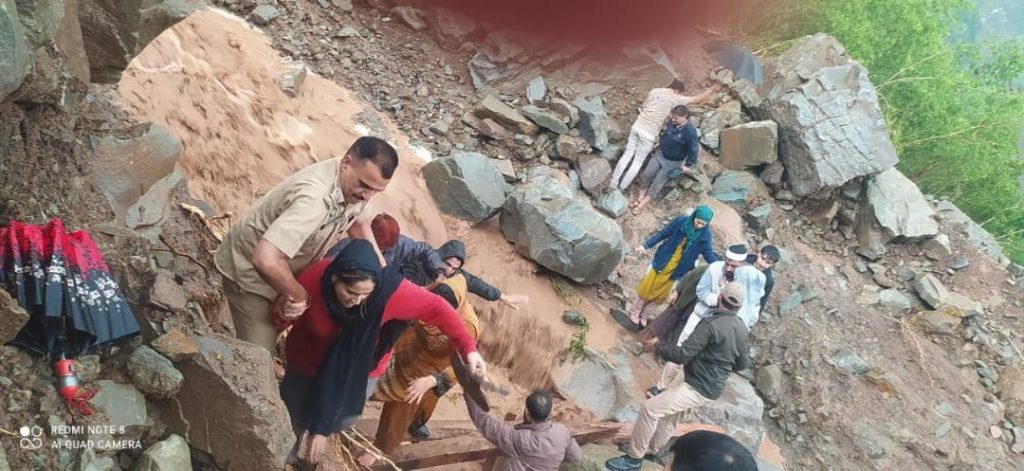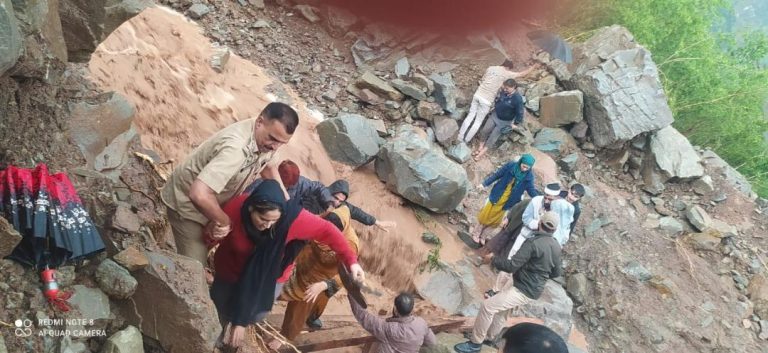
All Schools, Colleges to Remain Shut on April 21 in J&K’s Ramban
The Ramban district in Jammu and Kashmir has been hit by flash floods caused by heavy rain, which has resulted in a series of unfortunate events. A cloudburst near the Chenab Bridge in Dharamkund has claimed three lives, damaged several houses, and disrupted the normal functioning of the district. In the wake of this natural calamity, all educational institutions in Ramban will remain closed on April 21.
According to reports, the heavy rainfall in the region led to a cloudburst near the Chenab Bridge in Dharamkund, resulting in flash floods that wreaked havoc in the area. The incident has left a trail of destruction, with several houses damaged and three people losing their lives. The deceased have been identified as two women and a man who were trapped in their homes.
The authorities have launched a massive relief and damage assessment effort to help those affected by the disaster. Police teams have been deployed to the area to rescue those stranded and provide assistance to those in need. So far, nearly 100 people have been rescued by the police teams, and the rescue operations are ongoing.
The district administration has taken the decision to shut all educational institutions, including schools and colleges, on April 21 as a precautionary measure. This decision has been taken to ensure the safety and well-being of the students and staff. The authorities are monitoring the situation closely and will take further decisions based on the situation.
The people of Ramban district have been advised to remain vigilant and take necessary precautions to ensure their safety during the inclement weather. The authorities have also urged people to avoid traveling to the affected areas unless it is absolutely necessary.
The incident has highlighted the vulnerability of the region to natural disasters and the need for effective disaster management measures. The Ramban district has been prone to natural disasters, including landslides and flash floods, due to its geographical location. The region’s fragile ecosystem and the increasing frequency of extreme weather events make it essential to develop robust disaster management strategies.
The rescue and relief operations in Ramban district are being carried out by the police, disaster management teams, and other stakeholders. The district administration has also set up relief camps to provide shelter and food to those affected by the disaster. The administration is working closely with NGOs and other organizations to provide assistance to those in need.
The people of Ramban district are grateful to the authorities for their prompt response to the disaster. The swift action by the police and disaster management teams has helped to minimize the damage and save lives. The people are also appreciative of the efforts of the rescue teams and volunteers who have been working tirelessly to help those affected by the disaster.
In conclusion, the flash floods caused by heavy rain in Ramban district have resulted in a series of unfortunate events, including loss of lives and damage to properties. The authorities have taken the decision to shut all educational institutions on April 21 as a precautionary measure. The rescue and relief operations are ongoing, and the people of Ramban district are grateful for the efforts of the authorities and rescue teams. As the region continues to recover from the disaster, it is essential to develop effective disaster management strategies to minimize the impact of such events in the future.



